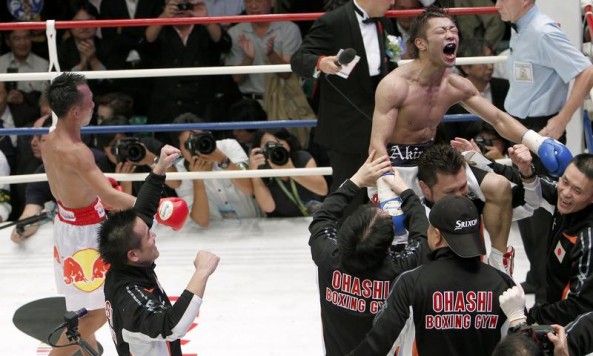Much like the buzz that built about the fight as it circulated from boxing forum to boxing forum, from Twitter follower to Twitter follower, Akira Yaegashi-Pornsawan Porpramook was a slow burn at the beginning. I compared it originally to a motorcycle revving up — loud and dangerous, but the brakes were still applied. By the middle rounds, it had taken off. By the 7th round, it was leaving trails of fire. Watching that round, you think, “No way this gets any better.”
And then, in the 8th, somehow, it does. In that round, Yaegashi and Porpramook took turns dominating the action, or just took turns teeing off on each other, and at various moments it looked like one would drop or stop the other; I literally gasped when Porpramook, his back against the ropes and seemingly in a bad way, suddenly sent Yaegashi stumbling backward. Finally, in the 10th, the ride came to a halt.
Akira Yaegashi-Pornsawan Porpramook is a testament to the greatness of the Internet. If not for YouTube, this fight gets confined to classic status only for the fine people of Japan who hosted it, watched it and delivered the winner, Yaegashi. Instead, diehards in America were able to belatedly catch up to a fight between two tiny, frenzied men on the other side of the world, and spread the gospel. (It was also a good year for tiny Thai fighters named “Porpramook” to be in YouTube gems, too, with a nice little honorable mention Fight of the Year coming this weekend via Kompayak Porpramoook vs. Adrian Hernandez.)
Despite all the Internet love, there were more prominent Fight of the Year candidates in 2011, the kind that aired on Showtime or HBO or ESPN2. But boxers this small — they were strawweights (105 lbs.), as small as professional fighters get — had no business ending up having a fight this big, one that stood above them all for raw, unhinged action.

